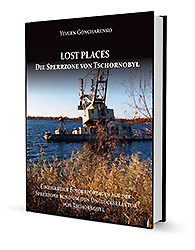 December 26, at 7:00 we leave our hotel in Minamisoma and go to the mountain village of Iitate.
December 26, at 7:00 we leave our hotel in Minamisoma and go to the mountain village of Iitate.
After the accident at the Fukushima Daiichi Nuclear Power Plant name of this village has become almost a second title after the Fukushima Daiichi on frequency of mention in the Japanese and international media. Iitate, although it is approximately 40 kilometres from the crippled Fukushima Daiichi Nuclear Power Plant, appears in the exact centre of the north-west radioactive trace and the levels of contamination of its territory is not very different from the levels of radioactive contamination of settlements in 20-kilometre zone of the obligatory evacuation.
 |
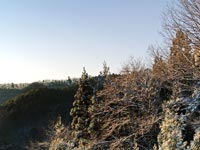 |
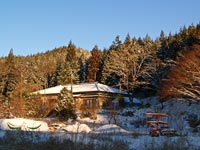 |
 |
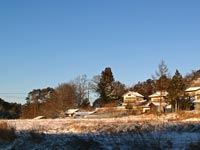 |
 |
Iitate (飯舘村)
Iitate village, Soma district, Fukushima Prefecture. Population – 6,149 people (June 1, 2010). It shares borders with the towns of Soma, Minamisoma, Date and towns Namie, Kawamata. Distance from the Fukushima Daiichi Nuclear Power Plant about 40 kilometres.

Iitate village, as is customary in Japan, is a merger of 18 small villages straggling along the Abukuma mountain plateau (阿武隈高地). Unfortunately, in Ukraine during the Soviet regime, we have lost our little homesteads, tiny villages, single households – all have been collected in one “pile”, and everything that was beyond the scope of this “pile” simply ceased to exist. Fortunately, the Japanese merger of villages does not mean the destruction of the original settlements. They still exist as beautiful and small patches scattered in the middle of a beautiful Japanese nature. Just from a certain year (in the case of Iitate from 1956), they all start bearing one common name.
Iitate was formed by merger of two villages: Iiso (飯曽村) and Otate (大舘村) in 1956. The name of the newly formed village was made from these toponyms. Although, actually, in 1967 Iitate annexed another one village – Ishibashi (石橋村). And if you figure out from how many of the villages generally consists Iitate, we get at least 18 original villages (Usuishi, in which we made a short stop on the way to Minamisoma December 25, is one of them), which joined since 1889. So as a result no we have this village of Iitate.
Apparently at some point in the village community get tired of these mergers. The idea is that in the end they should be attached to Minamisoma, but in 2004 they resigned from the council of the annexation by Minamisoma and pursues an independent course.
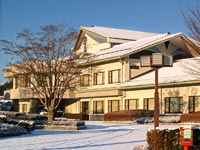 |
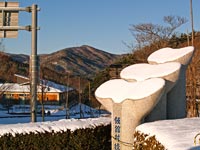 |
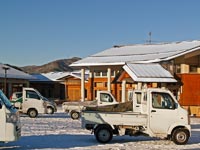 |
Less than one hour' journey from Minamisoma and we are already at the centre of Iitate. Near the building of village hall a few cars parked. Some of the former residents came to visit their relatives. Now in Iitate 13 people have left (according to the publication in the Asahi Shimbun).
We go further to the local school in the Iitoi district.
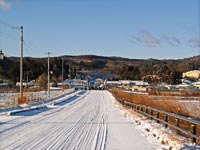 |
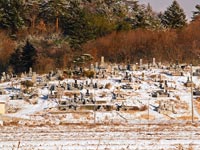 |
 |
 |
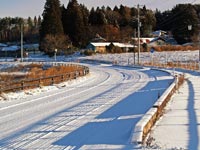 |
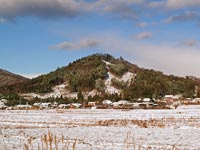 |
Right after the accident at the Fukushima Daiichi Nuclear Power Plant Iitate managed to host the 1,200 evacuees from the 20-kilometre zone of obligatory resettlement, but dosimetric measurements of the early days gave a sombre picture. At the current levels of gamma background annual dose of Iitate residents may reach 20-40 mSv (standard annual dose in most countries is in the range of 1 mSv). March 30 International Atomic Energy Agency appeal to the Government of Japan with a recommendation to expand the evacuation zone and to include the Iitate village in it, although it is outside the 20-kilometre zone. April 22, 2011 the Japanese government refers to the inhabitants of the village of Iitate with a request to leave the village as quickly as possible. May 15 begins the planned evacuation of the village. At the beginning of June 1,500 residents remained in the village. 90% of residents fled Iitate till June 22. By August, the village still had 120 inhabitants. As of January 2012 in Iitate left 13 people – elderly people who refused to leave their home village.
The central authorities have to be reconciled with the rest of the inhabitants, as the village is not included in the 20-kilometre zone and the evacuation took place here only voluntarily. Also, for the elderly stood up the mayor of Iitate Norio Kanno (菅野典雄), countered the claims of the central authorities and local “well-wishers” (who sent angry insulting letters to the mayor). He reasonably said that for the elderly much more harmful is the stress of evacuation and settlement in the new location than the harm caused by elevated levels of radiation. Norio Kanno knew what he was talking about as his own mother had died during the evacuation, and just before the evacuation in Iitate the oldest 102-year-old resident of the village committed suicide. And such cases during the evacuation of cities and villages of Fukushima were not a single facts.
“The most beautiful village in Japan”
The most beautiful village in Japan – such title Iitate got in 2010, and got it not only for the beautiful landscapes, but especially for its architecture, design and ecology. The village has become a sort of model, creating a symbiotic housing projects of the 21st century. Iitate was included in the official tour of the Ministry of Environment of Japan, to provide the public with examples of environmental symbiotic housing of the 21st century.
The school, to which we are now coming, on the architectural sites in Japan was called the ideal school of the 21st century
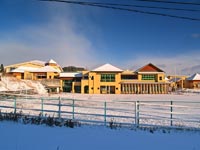 |
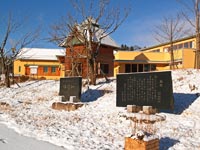 |
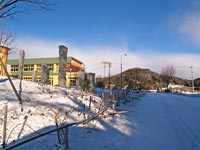 |
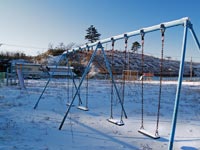 |
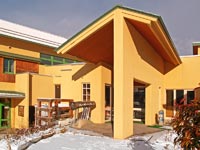 |
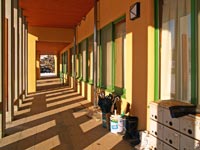 |
Levels of gamma background in the school are 2–4 μSv/h. Most of all near the gutters – up to 10 μSv/h.
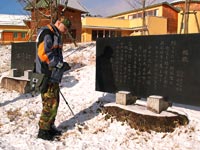 |
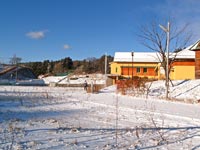 |
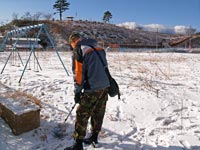 |
“The Power of Madei” までいの力
I never cease to be amazed and admire the fortitude of Japanese people. Already preparing for the evacuation from the radioactively contaminated village they had time to prepare and publish book of photos with the views of Iitate, to make people remember their village as beautiful as it was before March 11, 2011. The album is called: “The Power of Madei” までいの力.
After the accident at the Fukushima Daiichi and the announcement of evacuation, the TEPCO company representative arrived to Iitate to submit apologies. Some of the locals could not contain harsh words, but many others told them to stop and asked not to disgrace the village. Many journalists were surprised by this attitude of Iitate residents and they asked for clarification from the Mayor Norio Kanno:
— We all grew up here in the spirit of Madei, we have been living a “Madei life”.
The meaning of word “Madei” is not so easy to explain even to the Japanese from a neighbouring village, let alone to foreigner. Madei is the word in the local dialect, which explains the attitude of local residents, formed over the centuries. Literally translated as “both hands”, but it has a deeper meaning. To live the Madei life means to live with dignity, without the hustle and bustle, considerately, modestly, with care, with spirit, respectful to the surrounding world and if you already started something, do it with both hands, as more reliable.
Left alone in the abandoned village of Iitate Mayor Norio Kanno, answering the Mainichi Daily News newspaper reporter's question about hard times for his village, said:
— Where can I put my anger? I have to transform it, turn it into a different kind of energy that I can direct to try to get us all back home even one day sooner.
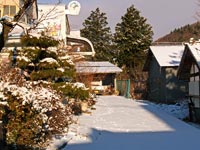 |
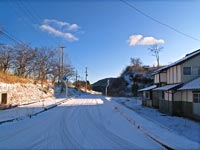 |
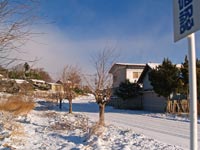 |
On the way back, almost on the outskirts of the village we met a group of local decontamination officers and talked with their chief Kazuki Takashima.
— It’s just a children's work. In the sense that it can handle even a child, it is very simple.
— But why do you remove the snow? It currently serves as a shield – it reduces the level of gamma radiation and eliminates dust.
— We have to mow all the grass, and pack it in special bags for waste, they are over there, – Kazuki Takashima points in the direction of the local radioactive waste temporary localization site, a small ground in the corner of the parking, filled with black plastic bags (the level of gamma background from the bags is about 20 μSv/h). – And how do we gather the grass, if it is under the snow?..
I am puzzled by such approach to decontamination. As for me, it would be wise to do not to spend so much effort, and wait for spring when the snow melts. But true Japanese would never sit by idly, and if the goal is to clean the contaminated area, no snow can stop them.
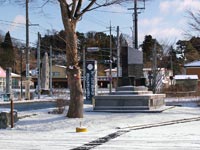 |
 |
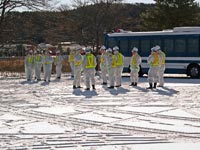 |
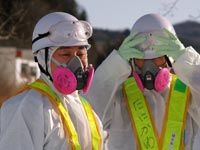 |
 |
 |
December 16, 2011 the local Iitate government provided “rescue plan” of their village.
There is no way for us to return unless we set up realistic goals and proceed with decontamination, – said Iitate Mayor Norio Kanno. – The first and foremost priority task is to reduce the annual dose for the residents to 5 mSv by the area decontamination. Our goal – to begin moving residents back in two years' time and have them all returned within five years.” Although the aim is to bring radiation levels down to 1 mSv per year, officials settled on the more realistic goal of 5 mSv. Other measures in the plan include: decontamination of land plots in 2 years, decontamination of farmland in 5 years. Organization of an independent laboratory to measure the radiation in the human body and measurement of farm products.
| Fukushima (福島県). The Last Day< Prev | Next >Minamisoma fights (南相馬市). Fukushima Prefecture. Day Four |
|---|








